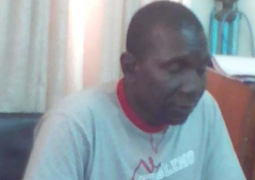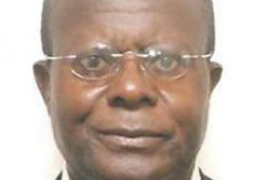According to him, the Great Green Wall of the Sahara and Sahel Initiative is a project to plant a wall of trees across Africa at the southern edge of the Sahara Desert, as a means to prevent desertification.
He said this was developed by the African Union to address the detrimental social, economic and environmental impacts of the land degradation and desertification in the Sahel and the Sahara.
Mr. Sexstone made these remarks at the launching of a 41-month project “Action Against Desertification” in support of the implementation of the Great Green Wall for the Sahara and the Sahel Initiative (GGWSSI) and South-South Cooperation in ACP Countries, held recently in Kerewan North Bank Region.
The project is an EU-ACP funded project, which is a direct contribution to the implementation of the Great Green Wall for the Sahara and the Sahel Initiative.
He said from the initial idea of a line of trees, from east to west through the African desert, the vision of a Great Green Wall has evolved into that of a mosaic of interventions addressing the challenges facing the people in the Sahel and the Sahara.
“As a programming tool for rural development, the overall goal of this sub-regional partnership is to strengthen the resilience of the region’s people and natural systems with sound ecosystem management, the protection of rural heritage and the improvement of the living conditions of the local population.”
According to him, the European Union is co-funding the Great Green Wall project to the tune of 1.50 million Euros or about D70 million.
He noted that their partners include the Gambia government, department of forestry; department of lands, NEA, ministry of Agriculture, MoBSE, and FAO among many others.
Highlighting some of the latest interventions in The Gambia, Mr. Sexstones said EU is a committed supporter of Climate Change action, under the recent completed EU funded 3.86 MEUR GCCA project.
The Gambia government had put in place a national integrated coastal zone management plan and a climate change policy, he said.
The Gambia is now well positioned to work towards building national resilience to climate change shocks, as well as generally to climate change proof general development of the country, he added.
The North Bank Region Governor Lamin Queen Jammeh described the initiative as timely and significant, for the fact that environmental problems are issues of great concern for sustainable development.
He added that the launching of Action Against Desertification: in support of the implementation of the Great Green Wall for the Sahara and the Sahel Initiative (GGWSSI) and South-South Cooperation in ACP countries is a clear testimony that the Gambia government under the leadership of President Yahya Jammeh is committed to end environmental problems such as deforestation and land degradation, among others.
Governor Jammeh said The Gambia, as a country, has shown real commitment to the protection of the environment as key component of sustainable development.
He said The Gambia is highly vulnerable to rise in sea level because of its low-lying coastal areas, adding that in view of the concentration of the socio-economic activities and cultural assets in low-lying coastal areas, The Gambia is particularly vulnerable to climate change impacts, which include sea-level rise, increased saline intrusion and flooding during torrential rains.
“I wish to assure you that the Government of The Gambia under the leadership of President Jammeh has and will continue to give its political will to support the project supported by EU in strengthening the capacities of local stakeholders in our various regions across the country,” Governor Jammeh said.
Sambou Nget, director of Forestry, said the idea of the Great Green Wall which was launched was first proposed by Olusegun Obasanjo, then president of the Federal Republic of Nigeria, which was endorsed by the African Union’s Eight Ordinary Session of the Assembly of Heads of State and Government meeting in 2007 in Addis Ababa, Ethiopia.
“The rationale behind this thought was to create and consolidate a defence line to stop or at least slow down the southward spread of the Sahara Desert through reforestation activities, capacity building and income generation for the enhancement of livelihoods of people living in that marginal environment.”
According to him, it is indeed both a contribution in the fight against poverty and in the efforts to effectively insure sustainable integrated development of rural areas by taking into account local conditions due to variations in biophysical context, soil and culture.
He said the concept has now become a mosaic set of interventions on the restoration of natural resources and the fight against poverty, while promoting synergy of action for the conservation of biodiversity, the fight against desertification and recovery potential of agro-silvo-pastoral areas to contribute effectively to their integral development.
This seeks to improve the resilience of ecosystems and local communities against adverse environmental conditions for livelihood improvement, he added.
Read Other Articles In Article (Archive)

Late Njaga Jagne’s children always ask ‘when is he coming back’
Apr 12, 2017, 11:17 AM




